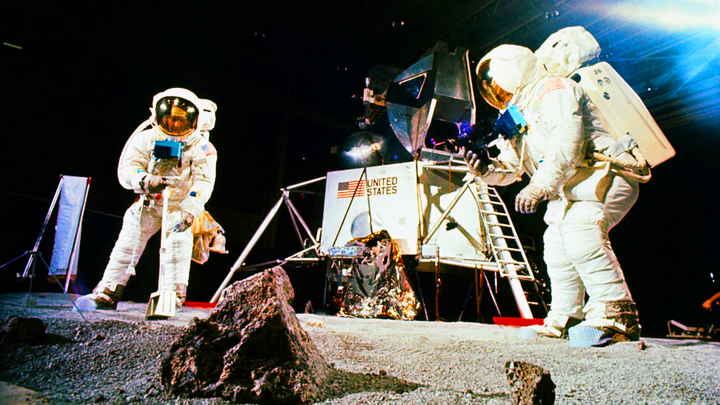In a remarkable leap forward for lunar science , experts at the US Naval Research Laboratory (NRL) have conducted an in-depth study of Moon rock number 79221, which was brought back from the Apollo 17 mission more than 50 years ago.
The results showed that hydrogen was present in this rock, hydrogen was formed by solar winds and comets that once attacked the surface of the Moon.

Future astronauts could tap into the water available on the Moon, using it as rocket fuel and life support. (Photo: NASA)
“As more space bases are installed permanently or permanently on the Moon, hydrogen has the potential to be a resource for producing water directly on the surface, through electrolysis,” said lead author of the new study Katherine Burgess, also a geologist at the NRL.
This method could significantly reduce costs, solve the logistical challenge of transporting water from Earth to the Moon, and make a sustainable human presence on the Moon more feasible.
According to Katherine Burgess, determining in advance where these available resources are located and understanding how to collect them before flying to the Moon will bring many favorable conditions for future space exploration .
NASA estimates that it would cost thousands of dollars to launch a bottle of water to the moon. So to cut costs, extracting hydrogen from lunar rock or ice and using artificial chemical reactions could produce water for astronauts.
Even breaking down water into its components, separating hydrogen into oxygen, could be used as rocket fuel to travel between the Moon and Earth. One day, the same approach could be used to send humans to Mars.
India's Chandrayaan-3 lunar mission, carrying two lander, Vikram, and a rover, Pragyan, has detected sulfur on the Moon's south pole. In the future, this substance could help astronauts build storage batteries and infrastructure on the Moon.
HUYNH DUNG (Source: Livescience/Livefromeuropa)
Source

































































































Comment (0)